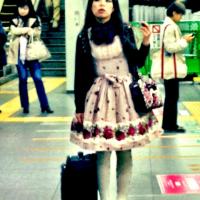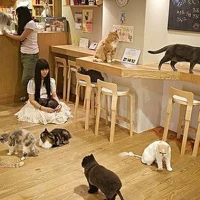
Marriage in Japan during the Heinan period
Marriage the way we see it has been a pretty recent phenomenon in Japanese history. During the Heinan period (794-1185) “marriages” were not seen as permanent arrangements. High born people could generally have several partners during their lifetime. Lower class people could not afford to keep more than one wife at a time, but they could change wives easily if the current wives family was of lower social status and could not bring political pressure against them.
Men could avoid being “tied down” to wives by not bringing them into their ancestral home and not building or maintaining private homes for them. A union was more of a family affair where two household were combined, not unlike in the middle ages in Europe, , rather than it being a private affair between two people. Even the children belonged to the household and not to any one of their parents.

Policital alliances
Between the 11th and 15th century, marriages in Japan became even more politicized and controlled by local authorities. The main purpose of marriage shifted from producing off spring to guaranteeing the continuation of the household, to providing guarantees of the social status of the family and ensuring their cooperation. Families took great care to make sure their sons and daughters married to someone of equal or above status. Multiple wives became less common in the upper class and their marriages became more like political alliances.
During the early decades of the Edo or Tokugawa period (1603-1868) the shogunate totally bureaucratized society, permanently fixing the people in the class of their birth as samurai, artist/craftsman, merchants, bankers and farmers. All families were required to register with local authorities and copies of koseki or “family registers” were provided to the shogunate government. The social status of each individual family was fixed in these registers.

Multiple pre-marriage partners
A marriage had to be approved first by a go-between, a role played by local government officals, to make sure that the proper social relationships were maintained and then the marriage had to be cleared by higher authorities. Generally speaking the only youngsters that had a say in their choices of marriages were the sons and daughters of farmers, who over the ages had continued the early aristocratic practice of multiple pre-marriage relationships and finally settling on a partner only after the girl in question became pregnant.
Young unmarried farmers traditionally met in ‘wakamo yado’ roughly translated as “young peoples huts”, to have sex. Young men also traditionally engaged in ‘yobai’, “night time visiting”, of the homes of young women. If a young woman allowed a particular man to continue the ‘yobai’ visits and as a result, became pregnant, the pair would be united in marriage.
After a fall down of the shogunate system of government and elimination of the fixed social classes in 1868, marriages were no longer subject to official government approval. The system of family registration however, still continued, and families still arranged alliances between household for their sons and daughters.

(Graph showing the relation beween love marriages and arranged marriages in Japan)
Arranging for two marriage candidates to meet for the first time, was known as Miai, which generally translates as “meet and see”, or more formally as ‘omiai” “honerable meet and see”. Omiai meetings were arranged by relativesm an employer or a go-between, after the families had been thorougly investigated to makes sure their social status was compatible, and photographs were then exchanged.
Arranged marriages or ‘omiai kekkon’ were continied to be the norm in Japan until well into the 1960s, some 20 years after the feudal household law was abolished following the end of WWII.
It was not until the mid 1950s that single Japanese boys and girls began dating “Western style” for the first time in the history of the country. This naturally resulted in the increase of “love marriages” or renai kekkon.

Arranged marriages today
Arranged marriages are still common in Japan today, however especially among the upper classes where marriages continue to be an economic, political and above all, a social union. The tradition of ‘wakamono yado’ continues in the form of “Love Hotels”and the ‘yobai’ custom has been replaced by visits to the ‘onsen’ or hotspring spa’s and other resorts.
Dozens of marriage bureaus, some of them operating on a very large scale and using the latest technology, have replaced the professional ‘nakodo’ or “go-betweens” and modern ‘omiai’ are arranged in coffee shops, restaurants and hotel lounges. Especially since Japanese people generally do not know how to communicate with the other sex due to going to seperate schools (not all schools are segregated, but all boys or all girls schools are still common in Japan today), seems to be a major cause for marriage brokers to continue to have a job in the foreseeable future.
(source: Japan’s cultural code words)
[contact-form][contact-field label="Name" type="name" required="1"/][contact-field label="Email" type="email" required="1"/][contact-field label="Website" type="url"/][contact-field label="Comment" type="textarea" required="1"/][/contact-form]










